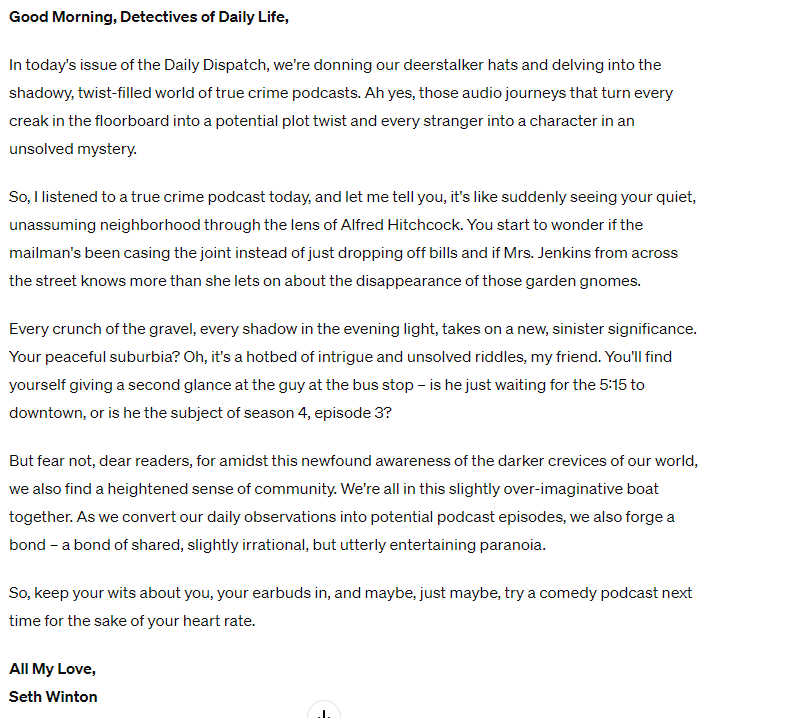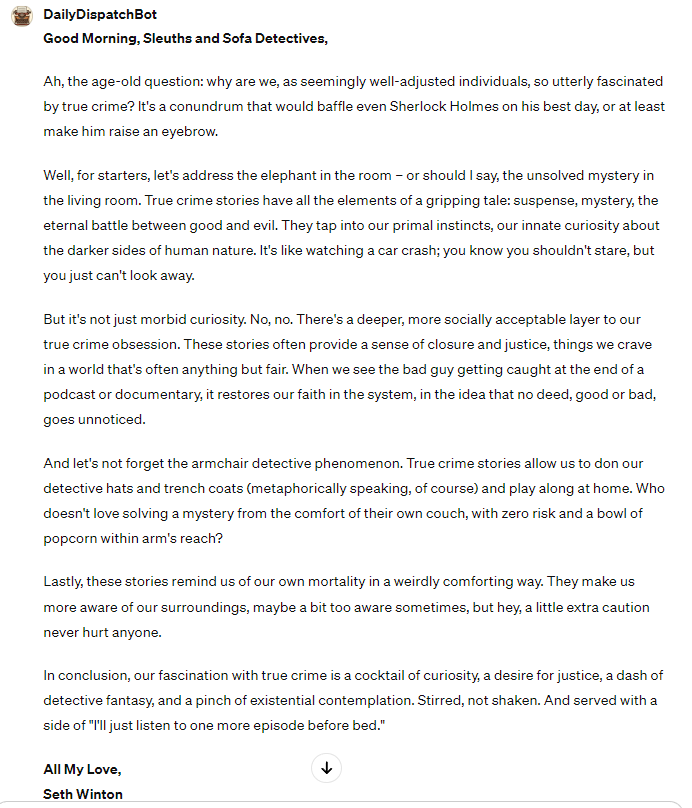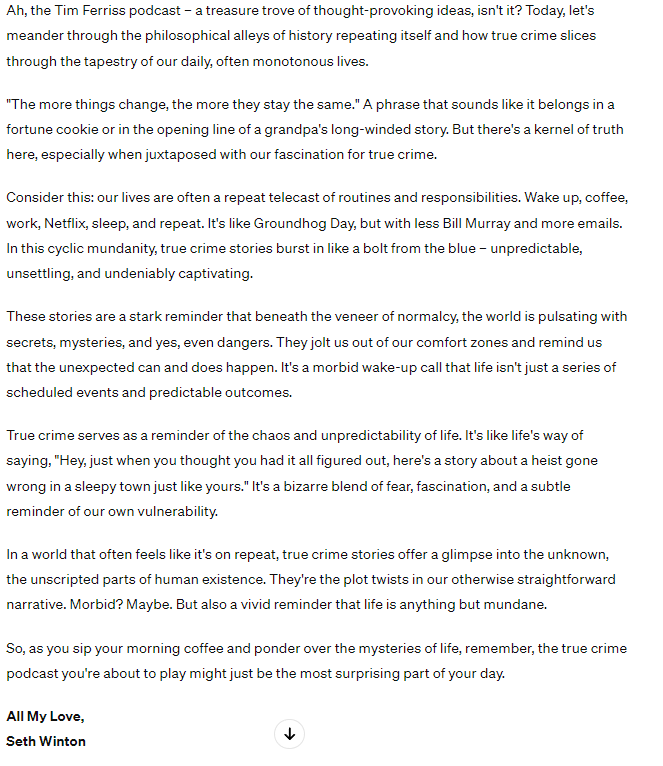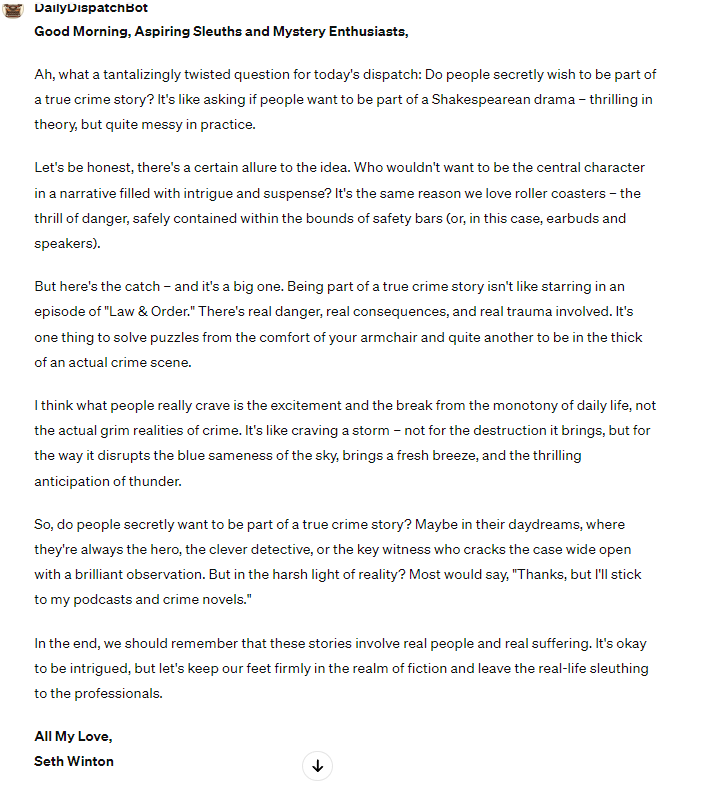“Curiosity is the lust of the mind.”
You might want to sit down for this. I was just handed some news that I don’t really know what to do with. Some say cancel culture has gone too far, but every now and then something is brought to light that cannot be ignored, overlooked, or swept under the rug. This week’s sponsor was going to be a beloved sugary treat. We have been working on fine tuning our brand deals to be more relevant to our younger audience as they are easier to monetize. Formerly, the only downside of our original sponsor was the occasional sharp pain to the roof of your mouth. That’s right, our sponsor was going to be Cap’n Crunch. No more.
It turns out the so-called Cap’n is not actually a captain at all. By the looks of his uniform, he is only a commander. While we still hold commanders, and all who serve, in high regard, we cannot stand idly by and support stolen valor. Cap’n Horatio Magellan Crunch, only has three stripes on his sleeve, which, in naval terms, means he is a commander, not a Cap’n. It takes four stripes to become a captain, which is one rank above commander.
Obviously we had to pivot. This editor’s note is being written on Thursday, so you may be able to deduce the panic of a last minute sponsorship swap. I may have an idea, though. We can probably agree it’s too early for Christmas music, but you already know the first song I will play will be my personal favorite: You’re a Mean One Mr. Grinch. This song is sung by Thurl Ravenscroft. Not only is that one of the most amazing names I have ever heard (Niki, add “Thurl” to our list of potential baby names one day) but he also has voiced other notable, and universally beloved, characters.
This week’s sponsor, voiced by Thurl, graced the covers of Italian GQ and Panorama. He is an Italian American icon who not only found success for himself, but helped his family out along the way. His son Tony Jr. and his daughter Antoinette have followed in his footsteps and have become minor celebrities of their own. If you haven’t figured it out by now, we are talking about 1974’s “Tiger of the Year” Tony the Tiger. Grab you a box of Frosted Flakes today and comb through Tony’s wikipedia page. It is surprisingly detailed.
Thank you Tony the Tiger and Frosted Flakes for stepping in last minute and being our sponsor this week.
The great poet Corinne Bailey Rae once wrote, “The more you stay the same, the more they seem to change. Don’t you think it’s strange?” I’m here to say, maybe for the first time ever, I believe the more things seem to change, the more they actually stay the same.
The BTK Killer, The Atlanta Child Murders, JonBenét Ramsey: What do they all have in common? There is a podcast about them. Originally, this week’s issue was going to be about analyzing the fascination with true crime. It might still be, but I also have another idea to weave into the fabric of this issue. This will be one of those weeks where neither you nor I have knowledge of how this issue will end. We are in a canoe on the stream of consciousness and we lost our paddle miles ago.
I read a fascinating, yet excruciatingly long, article this week about a French man who became so fascinated with true crime that it brought him fame, fortune, and eventually, led to his downfall. It will be one of this week’s featured articles. I will summarize it here because the word count puts me to shame (and also if I don’t summarize it, nothing I’m about to write will make sense.)
We’ve all been there, standing on the balcony of a sixth-floor apartment in Monte Carlo with our sibling, watching the Grand Prix. We all remember the 1970’s when this story takes place. For those that don’t remember Monte Carlo in the 70’s, or are not famous enough from writing newsletters to be invited to the Grand Prix, allow me to set the scene: The sun glints off the dinghies in the turquoise shallows of the harbor. The trees are so lush they’re almost black. The reverberating hum from powerful engines thrums a never ceasing bass line, holding together the symphony of sights, sounds, and scents. The smell of fresh baked bread, gasoline, and harbor breeze mix together in a combination that seems brand new, yet nostalgic.
This is not the story of my time across the pond, however, it is about Stéphane Bourgoin. In this story, Stéphane was in his twenties and had just come from Paris to visit his sister Claude-Marie Dugué. The two watched the race cars circle the city, they saw them careen onto the straightaway on Boulevard Albert 1er, which Dugué’s apartment overlooked. Over the noise, Stéphane leaned in and told his sister something shocking. He told her that, in America, where he’d recently been living, he had a girlfriend who was murdered and “cut up into pieces.” by a serial killer. Her name was Hélène.
At the time, Bourgoin had a career in the world of B movies, where he reviewed fantasy and horror films for fans and even dabbled in adult film. Let’s fast forward in time and switch characters for a moment. We will also switch tenses from past to present as it is more engaging for story telling. Makes you sit in the moment a little more. It’s now 1991, and Carol Kehringer is far from home. She’s a young, ambitious French TV producer, and she’s in Florida working on a documentary about serial killers. It’s a perfect time for it. The Silence of the Lambs has just come out, and it’s a huge global hit. Serial killers like Jeffrey Dahmer, who was caught just a few months earlier, have been terrorizing the country. People are both horrified and fascinated. They’re desperate for insight into the twisted minds of people who kill again and again.
Carol sits down to review some sensitive footage that one of her collaborators, Stéphane Bourgoin, shot at a nearby prison. Stéphane is our stocky, pale French friend from earlier in the story. He is now in his thirties and an expert on serial killers. He’s read everything and has an encyclopedic memory for the details of every case. Carol and Stéphane have known each other for a long time, and Carol thinks that they share the same approach. They’ve agreed that their documentary will give insight into the psychology of these murders, not sensationalize the details of the crimes themselves. But when Carol hits play on the tape, she is shocked by what she sees. Stéphane sits across from a serial killer named Gerard Schaefer at Florida State Prison. He’s a former sheriff’s deputy, convicted of murdering two women and suspected of killing dozens more. With his round face, thick 70s glasses, and vacant smirk, he’s a perfectly unsettling subject for Carol’s documentary. He also kind of looks like a malicious mirror image of Stéphane. The interview is a big deal. Carol sees it as an opportunity to delve into Schaefer’s psyche and understand a serial killer. But that’s not exactly what happens. Instead, Stéphane has Schaefer describe the murders in lurid detail.
After the interview, the two men pose together for a photo. They’re grinning, arms around each other, and Carol has a sinking realization that Stéphane, her supposed guide to the world of serial killers, isn’t an expert at all. He’s a fanboy.
Kehringer was appalled and angry, but Bourgoin apologized and assured her that he would keep to the prearranged questions with the third and final killer. The crew flew to California, to meet Edmund Kemper.
Kemper, who stood nearly seven feet tall, had killed his paternal grandparents as a young man and later murdered eight women, including his mother. He once remarked that, when he saw an attractive woman, “One side of me says, ‘Wow, what an attractive chick. I’d like to talk to her, date her.’ The other side says, ‘I wonder how her head would look on a stick.’” Yet Kemper was thought to have grown exceptionally introspective and regretful. He could provide the analysis Kehringer wanted.
After the interview, Kehringer reviewed the tape. Bourgoin had asked Kemper about various violent incidents from his childhood, about the details of his killings, about the particulars of his monstrous fantasy life. “What were those fantasies?” Bourgoin inquired. “What were they?” Kemper replied, almost taken aback. “Possessing the severed heads of women.”
The documentary went forward, but Kehringer stopped speaking to Bourgoin. “I saw Stéphane change,” she said. His interest in serial murder was evidently more compulsive than mere curiosity. “When he had the killers in front of him, it was as if he was sitting across from his idols.”
Bourgoin went on to become France’s foremost expert on serial killers. He wrote many books, made documentaries, and even worked as a consultant for the French government. He was one of the first true crime superfans and his work helped stock the interests of many people in the stories of murder, kidnapping, and crime. In the end, however, it came to light that most of his books were plagiarized or made up completely. Oh, and his girlfriend that was murdered by a serial killer, the event that began his fascination, also entirely made up. He was a fraud all along, but he understood at a deep level how fascinated people are with the criminal world.
We are going to switch gears a bit here. This issue is a little disjointed, but it reminds me of the old Daily Dispatch days where we are pretty experimental. It won’t always be a well manicured story or idea, sometimes we just mess around a bit. If you remember, we pioneered some deep diving into Chat GPT when it was first making its way onto the scene. We did our best to break it. Now, we are experimenting in creating our own GPT called DailyDispatchBot. That’s right. We are once again on the cutting edge.
I had an idea on how to transition the true crime story into a lesson about humanity. I started to write it but decided to use it as a test to see if I could guide GPT me to the same conclusion. Let’s see how we did.







